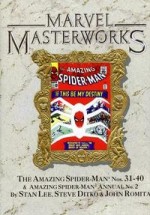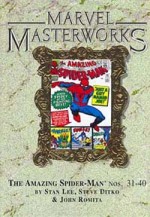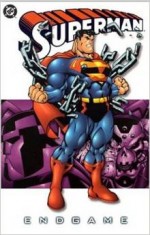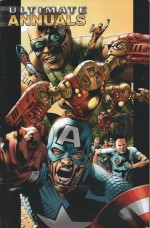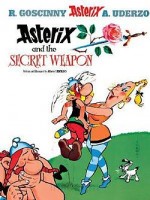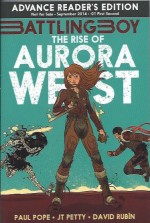
By Pat Mills & Joe Colquhoun (Titan Books)
ISBN: 978-1-78116-914-8
When Pat Mills & Joe Colquhoun began their tale of an impressionable lad who joins up just in time to fight in the disastrous Somme campaign, I suspect they had, as usual, the best of authorial intentions but no real idea that this time they were creating sheer comicstrip magic.
As affirmed in Neil Emery’s splendid appreciation ‘Into Battle: a Chronology of Charley’s War’, the landmark feature was originally published in British war anthology Battle (AKA Battle Picture Weekly, Battle Action etc.). A surprise hit, the serial launched in issue #200, running from 6th January 1979 until October of 1986.
It recounted, usually in heartrending and harrowing detail and with astounding passion for a Boys’ Periodical, the life of an East-End kid who lied about his age to enlist with the British Army reinforcements setting out to fight the Hun in 1916.
The stunning strip contingent contained within this superb Omnibus edition – 86 weekly episodes in all – form one of the most powerful and influential characterisations of the oh-so-ironic “war to end all warsâ€, touching upon many diverse aspects of the conflict and even the effects on the Home Front, all delivered with a devastatingly understated dry sense of horror and injustice and frequently leavened with gallows humour as trenchant as that legendarily “enjoyed†by the poor trench-bound “Tommies†of the time.
Before the tale commences however there are also a brace of educational and informative features to enhance the experience ‘Landships: the Evolution of the Tank’ by Steve White and a wonderful glimpse into the mind of that sublime and much-missed illustrator courtesy of ‘Joe Colquhoun in Conversation’ by Stephen Oldman.
This magnificent monochrome mega-compilation opens with a 4-page instalment (for much of the middle run the series came in 3-page episodes) ‘Charley’s War – the Story of a Soldier in World War One’ which followed 16-year-old London Bus Company worker Charley Bourne as he eagerly enlisted and so-quickly graduated to the unending, enduring horrors of the muddy, blood-soaked battlefield of The Somme.
Military life was notoriously hard and unremittingly dull… except for those brief bursts of manic aggression and strategic stupidity which ended so many lives. Closely following the recorded course of the war, Mills & Colquhoun put young Charley in the Westshire Regiment and showed a rapidly changing cast being constantly whittled away by various modes of combat attrition.
The weekly hell showed lesser-known, far from glorious sides of the conflict that readers in the 1970s and 1980s had never seen in any other war comic. Each strip was cunningly punctuated and elucidated by the telling narrative device of the simple lad’s letters to his family in “Blighty†and also cleverly utilised reproductions of cartoons and postcards from the period.
With Boer War veteran Ole Bill Tozer as his mentor Charley narrowly survives shelling, mudslides, digging details, gas attacks, the trench cat, snipers, the callous stupidity of his own commanding officers – although there are examples of good officers too – and the far too often insane absurdity of a modern soldier’s life.
Slowly but irrevocably the callow, naïve boy became a solid, dependable warrior – albeit one with a nose for trouble and a blessed gift for lucky escapes.
When Tozer leads a party across No-Man’s Land to capture prisoners for interrogation new pal Ginger sustains a frankly hilarious wound in his nether regions. But as a result, and despite the sortie establishing the inadvisability of an attack, the Allied Commanders continue their plans for a Big Push. Thus Charlie is confronted with an agonising moral dilemma when he catches a comrade trying to wound himself and get sent home before the balloon goes up.
This time, grim fate intervenes before the boy soldier can make a terrible choice…
The unit’s troubles increase exponentially when arrogant, ruthless aristocrat Lieutenant Snell arrives; constantly undermining and sabotaging every effort by sympathetic officer Lieutenant Thomas to make the riffraff cannon fodder’s lives tolerable. The self-serving toff takes a personal dislike to Charley after the lad drops his huge picnic hamper in the trench mud…
On July 1st 1916 The Battle of the Somme began and, like so many others, Charley and his comrades are ordered “over the top†and expected to walk steadily into the mortars and machine gun fire of the entrenched German defenders. Thomas, unable to stand the stupidity, cracks and commands them to charge at a run. It saves his squad but lands his men in a fully-manned German dug-out…
After ferocious fighting the lads gain a brief respite but the retreating Huns have left insidious booby-traps to entice them. Many beloved characters die before Charley, Ginger and poor shell-shocked Lonely are finally captured by “the Bocheâ€.
As they await their fate the traumatised veteran reveals to Ginger and Charley the horrific events of the previous Christmas and why he so wants to die. Moreover the sole cause of that appalling atrocity was the same Snell who now commands their own unit…
Through Charley’s dumb luck they escape, only to blunder into a gas attack and British Cavalry. The mounted men then gallop off to meet stern German resistance (resulting in some of the most baroque and disturbing scenes ever depicted in kids comics) whilst Bourne and Co. are miraculously reunited with their comrades.
The combat carnage has not ceased however. Waiting for the order to attack, Lt. Thomas and his hard-pressed men are suddenly subjected to a terrific barrage. With horror the officer realises they are being shelled by their own big guns and dispatches a runner to Snell who has a functioning line to Allied HQ.
The role of messenger was the most dangerous in the army but, with no other means of communication except written orders and requests, failure to get through was never acceptable. By the time Charley volunteers a dozen men have failed. With British shells still slaughtering British troops Bourne is determined to pushing his luck as the “thirteenth runnerâ€â€¦
As previously stated Charley’s War closely followed key events of the war, using them as a road map or skeleton to hang specific incidents upon, but this was not the strip’s only innovation. The highly detailed research concentrated more on the characters than the fighting – although there was still plenty of heartrending action – and declared to the readership (which at the time of original publication were categorically assumed to be boys between ages 9-13) that “our side†could be as monstrous as the “bad guysâ€.
Mills also fully exercised his own political and creative agendas on the series and was always amazed at what he got away with and what seeming trivialities his editors pulled him up on (more fully expanded upon in the author’s informative ‘Strip Commentary’ which concludes this Omnibus edition)…
With the Thirteenth Runner storyline, likable everyman Charley Bourne slowly began his descent from fresh-faced innocent to weary, battle-scarred veteran as the war reached beyond the cataclysmic opening moves of the Somme Campaign and into the conflict’s most bloody events.
Frantically making his way to the rear positions Charley successfully passes the fallen twelve runners but only encounters more officer arrogance and Professional Soldier stupidity before the battle ends. Snell refuses to even read the message until he has finished his tea…
Helpless before the aristocrat’s indifference Charley angrily returns to the Front. Finding everybody apparently dead, he snaps: reduced to a killing rage he is only dragged back to normal when Ginger, Smith Seventy and the Sarge emerge from a shattered support trench.
The lad’s joy is short-lived. Thomas is arrested for showing cowardice in the face of the enemy, and with him gone Snell now commands the unit of despicable disposable commoners…
Removed to the Rear to have their wounds treated, Charley and his pals meet Weeper Watkins. The former ventriloquist cries permanently. His eyes have been ruined by exposure to poison gas but he is still considered fit for duty…
Soon however they all fall foul of sadistic military policeman Sergeant Bacon who has earned his nickname as “the Beast†over and over again…
With a chance to blow off steam – such as a hilarious volunteer Concert Party show – Charley and Weeper are soon in the Beast’s bad books. However his first attempt to beat and break Bourne goes badly awry when a couple of rowdy Australian soldiers join the fray and utterly humiliate the Red Cap.
Bullies are notoriously patient and Bacon’s turn comes at last when Lt. Thomas is found guilty. Charley and Weeper refuse to be part of the firing squad which executes him and are punished by a military tribunal, leaving them at the Beast’s non-existent mercy. Enduring savage battlefield punishments which include a uniquely cruel form of crucifixion, their suffering only ends when the base is strafed by German aircraft…
With sentence served and Bacon gone, Charley is soon back in the trenches, just in time for the introduction of Tank Warfare to change the world forever.
A fascinating aspect of the battle is highlighted here as the strip concentrates heavily upon the German reaction to this military innovation. The Central Powers considered the tank to be an atrocity weapon in just the same way that modern soldiers do chemical and biological weapons.
In the build-up to the Big Push Charley is singled out by a new replacement. Unctuous Oliver Crawleigh is a cowardly spiv and petty criminal, but he’s also married to Charley’s sister Dolly. The chancer ignobly attaches himself to the young veteran like a leech, offering to pay Charley to either protect him or wound him some minor way which will get “Oiley†safely back to Britain…
The next day the Empire’s new landships make their terrifying debut with army infantry in close support and the effect on the Germans is astounding. In a ferociously gripping extended sequence Mills & Colquhoun take the readers inside the hellish iron leviathans as the outraged Huns devote their manic utmost efforts into eradicating the titanic terrors.
The carnage is unspeakable but before long Charley, Oiley and Smith Seventy are inside one of the lumbering behemoths, reluctantly replacing the dead crew of clearly deranged tank man Wild Eyes as the modern-day Captain Ahab drags them along for the ride: seeking a madman’s redemption for the loss of his comrades, the slaughter of a town and destruction of a church…
In the quiet of the weary aftermath Oiley deliberately puts his foot under a tank to “get a Blighty†(a wound sufficiently serous to be sent home to England) and attempts to bribe Charley into silence. The disgusted, exhausted teenager makes him eat his filthy money…
During this lull in the fighting, events on the German side saw despised commoner and Eastern Front veteran Colonel Zeiss spurn his aristocratic Junker colleagues’ outdated notions and devise a new kind of Total Warfare to punish the British for their use of mechanised murder machines…
Charley meanwhile is wounded and his comrades celebrate the fact that he will soon be home safely. Naturally, things are never that simple and the callous indifference of the army medical contingent – especially the notorious “Doctor Noâ€, who never lets a man escape his duty – means that any soldier still able to pull a trigger is sent back into battle.
Bourne returns to the trenches just in time to meet the first wave of Zeiss’ merciless “Judgement Troopsâ€, who stormed the British lines, slaughtering everyone – including German soldiers who got in the way – in a savage, no-holds-barred assault, whose “Blitzkreig tactics†overwhelm everything in the path.
Charley and his mates experience fresh horrors: battlefield executions, new and experimental forms of poison gas, flamethrowers, strafing by steel javelins and brutal, uncompromising hand-to-hand combat in their own overrun trenches before the bloody battle peters out indecisively…
Zeiss is subsequently cashiered by his own appalled superiors, but knows that one day his concepts of Blitzkrieg and Total War will become the norm…
Exhausted, battle-weary Charley is again injured, losing his identification in the process and returned eventually to England as a shell-shocked temporary amnesiac. His mother undergoes slow torture as she receives telegrams declaring her son, missing, dead, found wounded and lost again…
Mills & Colquhoun now begin a masterful sequence that breaks all the rules of war comic fiction; switching the emphasis to the Home Front where Charley’s family are mourning his apparent death and working in the war industries, just as the German Zeppelin raids on British cities are beginning.
Mills’ acerbic social criticism makes powerful use of history as the recovering hero experiences the trials of submarine warfare, when the troop ship carrying him and Bill Tozer back to Blighty is torpedoed…
When their perilous North Sea odyssey at last brings Charley back to Silvertown in London’s West Ham, it is in the wake of a catastrophic disaster in which fifty tons of TNT exploded at a munitions factory, killing more than seventy workers and injuring a further four hundred…
No longer comfortable around civilians and with no stomach for the jingoistic nonsense of the stay-at-homes or the covert criminal endeavours of boastful “war-hero†(and secret looter) Oiley, Charley hangs out in pubs with the Sarge and thereby reconnects with old soak and Crimean War survivor Blind Bob…
London is a city under constant threat, not just from greedy munitions magnates who care more for profit than the safety of their workers or even the victory of their homeland, but also increasingly common aerial bombing raids which provoke mindless panic and destruction at the very heart of the British Empire.
Focus here divides as Charley’s days are contrasted with the zealous mission of devoted family man Kapitan Heinrich von Bergmann who leads his squadron of Zeppelins in a carefully calculated night sortie against the hated English…
When Blind Bill is evicted from his rooms Charley invites him to stay with the Bournes and the beggar’s incredible hearing (coupled with the area’s quaint air-raid listening devices) provides enough warning to seal Bergmann’s doom, but not before the airman has rained tons of explosive death on the capital…
During the bombing Charley discovers his mum is still toiling in the local munitions works. The exploitative owner has decided not to sound his air raid evacuation alarm as he has his profits and contracts to consider. Charley is not happy and dashes to get her out…
This stunning collection ends with a sharp jab at the dubious practices of British recruitment officers (who got bonuses for very volunteer they signed up) as Charley stops his extremely little brother Wilf from making the same mistake he did, and teaches the unscrupulous recruiter a much deserved lesson
To Be Continued…
Charley’s War is a highpoint in the narrative examination of the Great War through any artistic medium and exists as shining example of how good “Children’s Comics†can be. It is also one of the most powerful pieces of fiction ever produced for readers of any age.
I know of no anti-war story that is as gripping, as engaging and as engrossing, no strip that so successfully transcends its mass-market, popular culture roots to become a landmark of fictive brilliance. We can only thank our lucky stars that no Hollywood hack has made it a blockbuster which would inescapably undercut the tangibility of the “heroes†whilst debasing the message.
There is nothing quite like it and you are diminished by not reading it.
© 2004 Egmont Magazines Ltd. All Rights Reserved.
Charley’s War: A Boy Soldier in the Great War is published on August 8th 2014.




